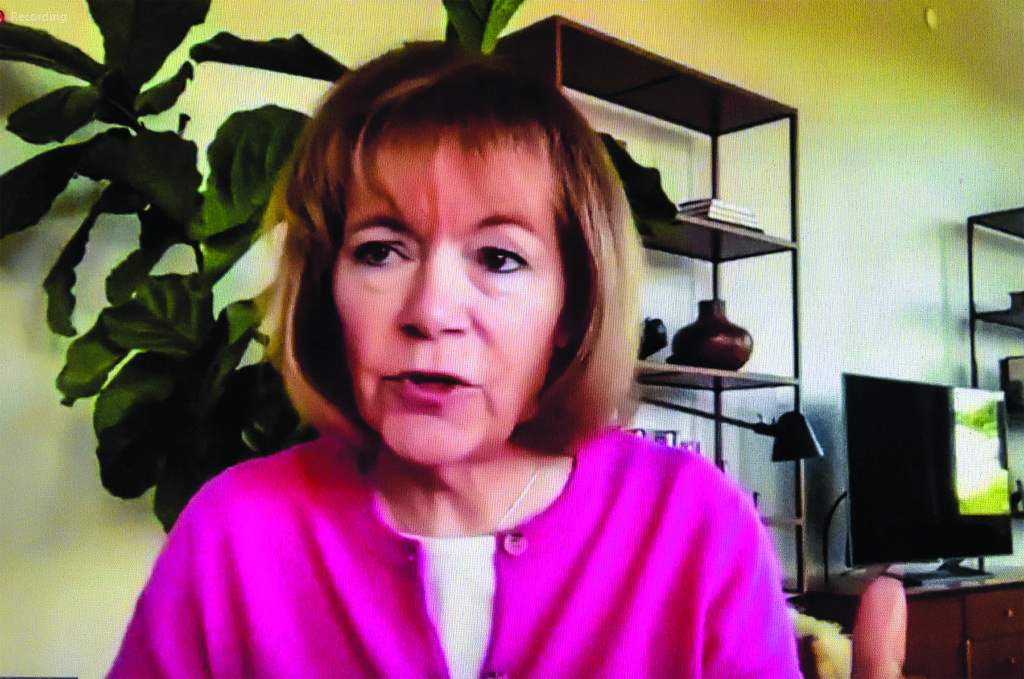
Nancy Edmonds Hanson
nancy.edmonds.hanson@gmail.com
Forty members of the Moorhead Business Association shared a virtual breakfast with U.S. Sen. Tina Smith May 13, when she discussed measures to cope with the COVID-19 crisis and fielded their questions. The meeting, which took place via the Zoom digital video app, was hosted by director Sheri Larson and Derrick LaPoint, who heads Downtown Moorhead Inc.
The first-term senator pointed to the collaboration that has so far resulted in appropriating roughly $3 trillion to help businesses and individuals weather the economic storm set off by the pandemic … four separate measures that represent, she said, “a significant accomplishment at a time when Washington is not exactly a model of bipartisan cooperation.”
Yet more, she said, must be done. She cited three areas she considers priorities: to make sure that rural hospitals get the support they need, especially for mental health services; to continue to offer direct cash assistance to individuals and small businesses, as well as the agricultural sector; and to aid local, county and state governments. “They’re weathering major losses because businesses are closed and sales taxes are not collected,” she observed.
“The first CARES Act included $150 billion for local governments. Since then, we can see more incredible impact,” she said. She pointed to Minnesota’s slide in a few months from substantial budget surplus to a $2.4 billion deficit. “That’s painfully near to my heart,” she added, citing the $6 billion deficit Gov. Mark Dayton inherited when she served as his chief of staff.
Members highlighted several major concerns, including the unique challenge of Moorhead bordering on North Dakota, where all businesses were recently reopened. “We see some ‘shop Moorhead’ customers going across the border,” one member commented. “We’re really seeing this concern bubble up.”
Smith responded, “I haven’t talked to a single business owner who says, ‘I don’t care about public health. I just want to open up to make money.’ We all want it to happen, but safely.” She acknowledged the concern but could offer no cure: “The more people move around, the more Covid is going to spread. I think Gov. Walz’s decision to open up slowly is good, but the border complicates things.
“The best way back is to address the public health component first with adequate testing and PPE so that people can feel safe.”
Brian McDonald, who had been named district director of the U.S. Small Business Administration’s Minnesota office just two days before, reported that the Paycheck Protection Program still had more than $118 billion available to loan to small business as of last week. After the first round of funding was quickly depleted, he said, demand for the most recent allocation has slowed significantly from more than $3 billion per day to a little more than $2.3 billion. “You can access PPP loans as well as Economic Injury Disaster Loans through your SBA lender,” he said. “I’m hearing that the decks are clear and they’re able to take on clients again.”
In the 12 days leading up to May 8, he said, 43,000 small businesses and nonprofits were able to access PPP funds. The average loan in Minnesota was $58,000 versus $73,000 nationwide. During the second round, he said, more than 90% of loans were under $100,000. “The funds are truly going to very small businesses,” he said.


